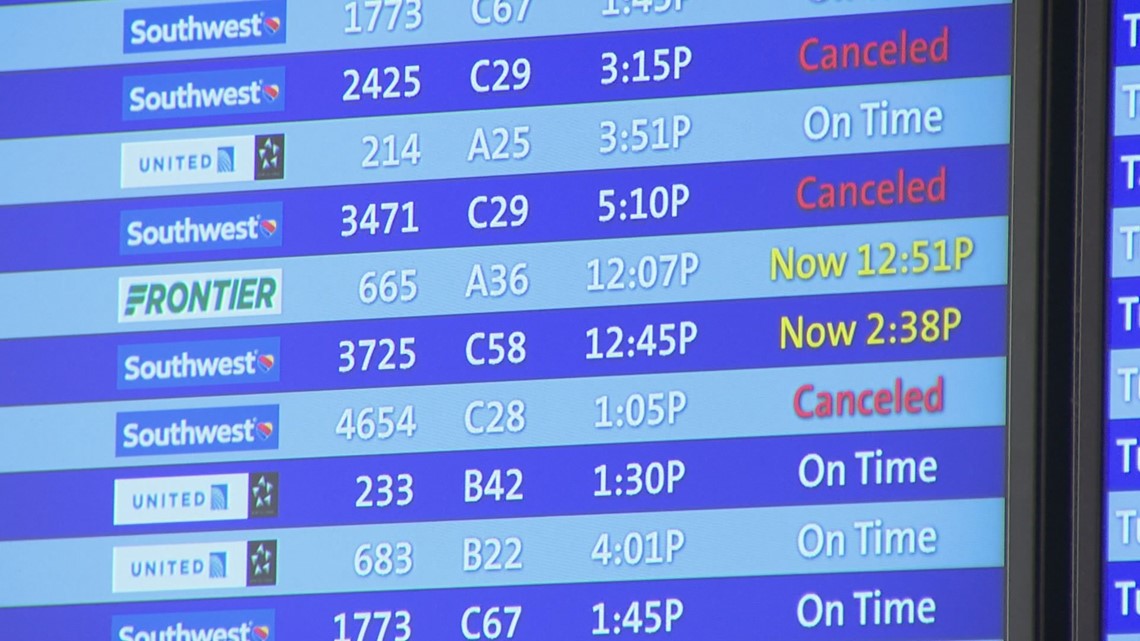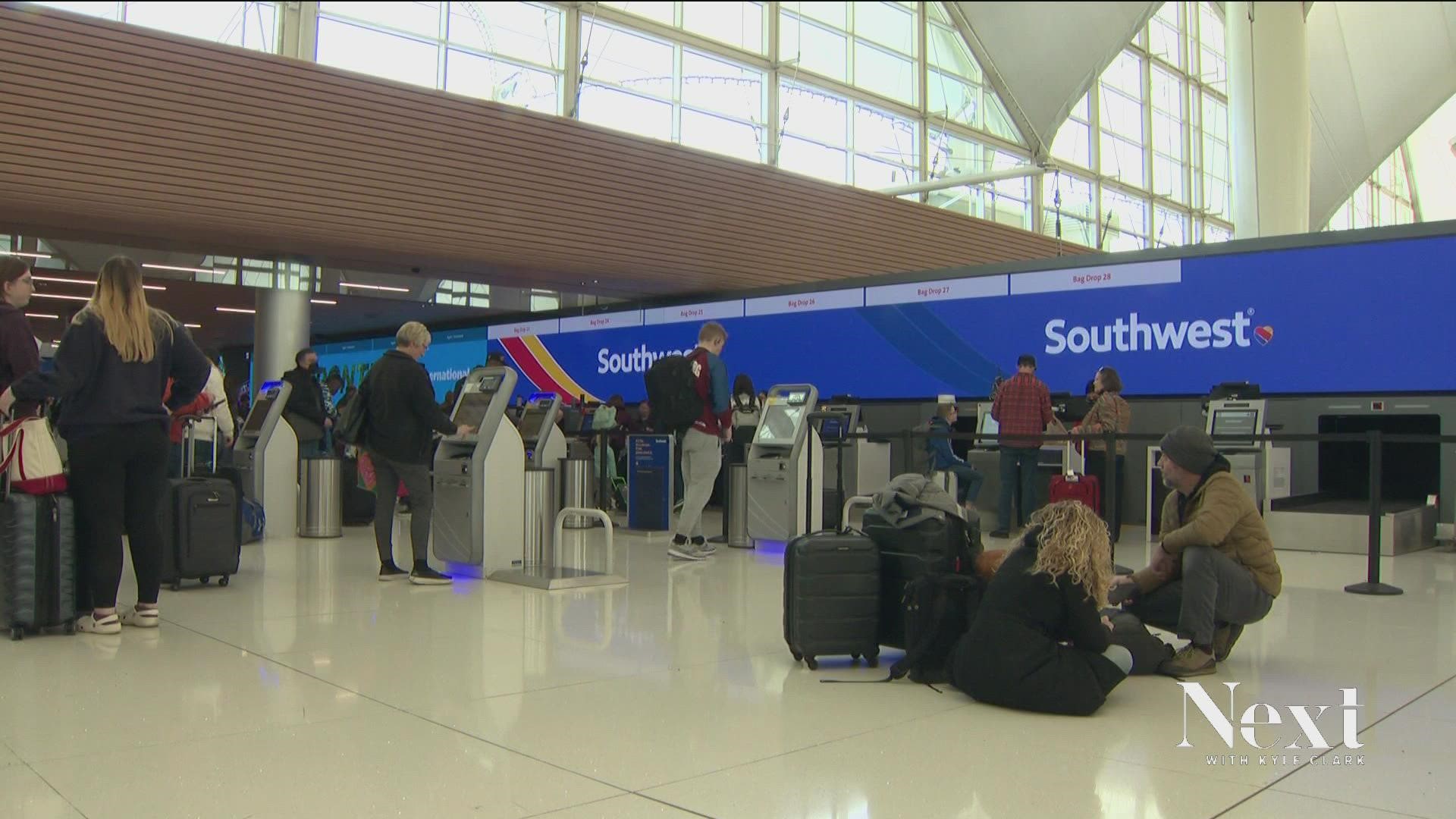DENVER — The CEO of Southwest Airlines promised to “double down” Tuesday on plans to upgrade technology within the airline after a winter storm snarled operations for the domestic carrier, stranding thousands of passengers during the Christmas holiday.
In a video statement released late Tuesday afternoon, Bob Jordan blamed an unprecedented winter storm for creating the problem and apologized for challenges his airline continues to wrestle with as it works to become fully operational again.
“Clearly we need to double down on already-existing plans to upgrade systems for these extreme circumstances so that we never again face what’s happening right now,” Jordan said in a recorded statement released on Southwest’s news release page.
His statement comes after unions for both pilots and flight crews publicly challenged the airline’s assertions that the struggles surrounding the airline's schedule were caused by staffing problems and Winter Storm Elliott.
“Our COO and CEO today for about the first time alluded to the fact that this was the cause of it and it’s infrastructure…IT infrastructure,” said Tom Nekouei, a Denver-based Southwest pilot and part of the leadership team of the Southwest Pilots Association, which represents the airline’s more than 10,000 pilots. “If you look at our history of meltdowns they’re getting to be more prevalent and they’re getting to be more severe and it’s taking us longer to recover from these meltdowns. We are woefully unprepared in terms of IT and how we deal with this growing network that we have.”
One of the leading culprit of problems this week is Southwest’s crew scheduling system, which Nekouei said requires pilots and crewmembers to call in to communicate about where they need to go or if they call in sick.
“The backlog is 4-6 hours long and people are finally giving up,” he said.


Corliss King, second vice president of Transit Workers Union Local 556, which represents flight attendants in the system, said making sick calls, reporting fatigue or simply finding out information about a flight is nearly impossible.
“I think that people will have a hard time imagining being on hold for your job for 20 hours, 17 hours, 5 hours,” she said. “Often it works. But when it doesn’t work, it’s catastrophic. We’ve asked them to bring our flying and our technology up to the airline we have today. This is not our airline from 1971.”
Southwest has grown exponentially over the years to become one of the largest domestic carriers in the country.
“We used to be a very small airline in the 70s and now we’re a behemoth – 4,000 flights a day – they will market about 5,000 flights a day down the road,” Nekouei said. “Our infrastructure and specifically our IT infrastructure has never caught up with it because the company has not reinvested in the company.”
The way Southwest routes flights may have also contributed to the issues.
“Southwest is uniquely vulnerable to weather problems, especially one as geographically extensive and as intensive as this storm has been,” travel industry analyst Henry Harteveldt said in an e-mail.
While other airlines operate as “hub and spoke” airlines, guiding flights from a hub airport to destinations then back to a hub, Southwest operates as a point to point airline, often operating flights from coast to coast.
“So, when an extensive bad weather system hits, Southwest is affected in ways that other airlines are not,” Harteveldt wrote. “It also appears Southwest did not choose to pre-cancel flights in various cities as the airline learned more about the storm’s size, scope and expected direction of travel. Other airlines did, and that, along with their hub/spoke networks, allowed them to recover faster. Contrast American’s and United’s performances over the past few days to Southwest.”


One major concern about the rash of cancellations for Southwest will be the impact on the airline’s brand.
“We’re concerned about those return customers now,” Nekouei said. “And whether or not they have long memories – especially if you strand them on Christmas – something that’s so sacred to people – whether or not they’re going to come back for years to come.”
The airline will have to do a lot of work to earn back trust.
“The result may be that Southwest has to “buy back” disaffected travelers with deeper discount fares than it might otherwise charge,” Harteveldt wrote. “The airline may also have to conduct more promotions than it had planned. And some portion of Southwest passengers who had to buy last-minute, likely expensive, flights on other airlines may find those other airlines to be as good as or possibly better than Southwest, and may not return.”
SUGGESTED VIDEO: Full Episodes of Next with Kyle Clark

